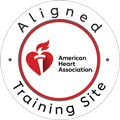Cardiopulmonary Resuscitation (CPR) is a vital emergency procedure that can significantly increase the chances of survival for individuals experiencing cardiac arrest. Prompt and effective CPR can buy valuable time until advanced medical help arrives, making it a critical skill for rescuers to possess.
Over the years, CPR techniques have evolved, with different organizations advocating for variations such as CAB (Compressions, Airway, Breathing) and ABC (Airway, Breathing, Circulation). Understanding the differences between these methods is essential for rescuers to make informed decisions during emergencies.
Understanding CPR
CPR is an emergency procedure performed to manually maintain blood circulation and oxygenation in individuals who are in cardiac arrest or experiencing respiratory failure. Its primary goal is to keep vital organs perfused until advanced medical care can be provided. CPR techniques have evolved significantly since their inception in the 1960s. Early methods focused on airway maintenance and artificial ventilation, while modern CPR incorporates chest compressions to maintain circulation. This evolution reflects advancements in medical understanding and technology.
Early initiation of CPR is crucial for improving outcomes in cardiac emergencies. Research has shown that bystander CPR, performed promptly after cardiac arrest, can double or triple the chances of survival. Every minute without CPR reduces the likelihood of survival, underscoring the importance of immediate action.
Exploring CPR Techniques
ABC Method (Airway, Breathing, Circulation):
The ABC method emphasizes establishing and maintaining the airway, providing rescue breaths, and assessing circulation through chest compressions. This traditional approach prioritizes airway management before focusing on circulation.
CAB Method (Compressions, Airway, Breathing):
Call Us Now
Get the Best CPR Class in Columbus Today!
The CAB method reverses the sequence, prioritizing chest compressions to maintain circulation before addressing the airway and providing rescue breaths. This approach acknowledges the importance of immediate circulation in improving outcomes.
Comparative Analysis: CPR CAB vs. ABC
Both CAB and ABC techniques have demonstrated efficacy in CPR, but their effectiveness may vary depending on the context of the emergency. For instance, in cases of sudden cardiac arrest, prioritizing chest compressions with the CAB method may be more beneficial.
Research comparing the outcomes of CPR performed using CAB and ABC methods has yielded mixed results. While some studies suggest no significant difference in survival rates, others indicate a potential advantage for the CAB approach in certain scenarios.
Leading medical organizations, including the American Heart Association (AHA) and the European Resuscitation Council (ERC), have endorsed variations of both CAB and ABC techniques. Their guidelines emphasize the importance of high-quality chest compressions and rapid intervention in cardiac emergencies.
Factors Influencing Technique Selection
The choice between CAB and ABC methods may depend on factors such as the rescuer’s training level, the presence of advanced medical support, and the specific circumstances of the emergency. Lay rescuers may find the CAB method simpler to remember and perform effectively.
Rescuers should stay updated with the latest CPR guidelines and protocols issued by reputable medical organizations. These guidelines often incorporate evidence-based recommendations for CPR techniques and emphasize the importance of continuous quality improvement.
Special populations, such as pediatric and geriatric patients, may require modifications to standard CPR techniques. Rescuers should be familiar with age-specific CPR protocols and adapt their approach accordingly to ensure optimal outcomes.
Importance of Formal CPR Training:
Formal CPR training is essential for developing the knowledge, skills, and confidence needed to perform effective CPR. Training courses provide hands-on practice, simulation exercises, and guidance from qualified instructors. CPR certification programs offer structured training in CPR techniques, including both CAB and ABC methods. Participants learn to recognize cardiac emergencies, perform CPR interventions, and use automated external defibrillators (AEDs) effectively.
Rescuers should seek opportunities for ongoing skill development and stay informed about updates in CPR guidelines and techniques. Continuing education courses, refresher training, and online resources provide avenues for maintaining proficiency in CPR.
Common Myths and Misconceptions
Misconceptions about the effectiveness and appropriateness of CPR techniques may exist among rescuers and the general public. Addressing these misconceptions helps ensure that rescuers make informed decisions during emergencies. Myths surrounding CPR techniques, such as the necessity of mouth-to-mouth ventilation or the sequence of steps in CPR, can impact the quality of care provided. Education and awareness efforts help dispel these myths and promote evidence-based practices.
CPR plays a crucial role in the chain of survival for individuals experiencing cardiac arrest. Rescuers should understand their role in initiating CPR promptly, activating emergency medical services (EMS), and providing continuous care until professional help arrives.
The Ultimate Guide to CPR CAB or ABC provides a comprehensive overview of CPR techniques, their variations, and factors influencing technique selection. It emphasizes the importance of informed decision-making and ongoing training in CPR. By acquiring this life-saving skill, they can make a significant difference in their communities and contribute to saving lives during emergencies.
CPR is a critical intervention that can make the difference between life and death in cardiac emergencies. Whether using the CAB or ABC method, rescuers play a vital role in providing immediate care and improving outcomes for individuals in need.
In conclusion, mastering CPR techniques is not just a skill, but a life-saving necessity in our communities. Whether you’re a healthcare professional seeking certification or an individual committed to being prepared in emergencies, CPR Columbus stands as the ultimate resource. As an American Heart Association training site, we offer comprehensive courses including BLS for Healthcare Providers, ACLS, PALS, and CPR and First Aid, ensuring you’re equipped with the knowledge and confidence to act swiftly when it matters most. Our stress-free, hands-on approach ensures that every participant leaves not only certified but empowered. Don’t settle for anything less when it comes to CPR certification in Columbus—choose CPR Columbus for the best training experience and the ability to make a difference when it counts.


